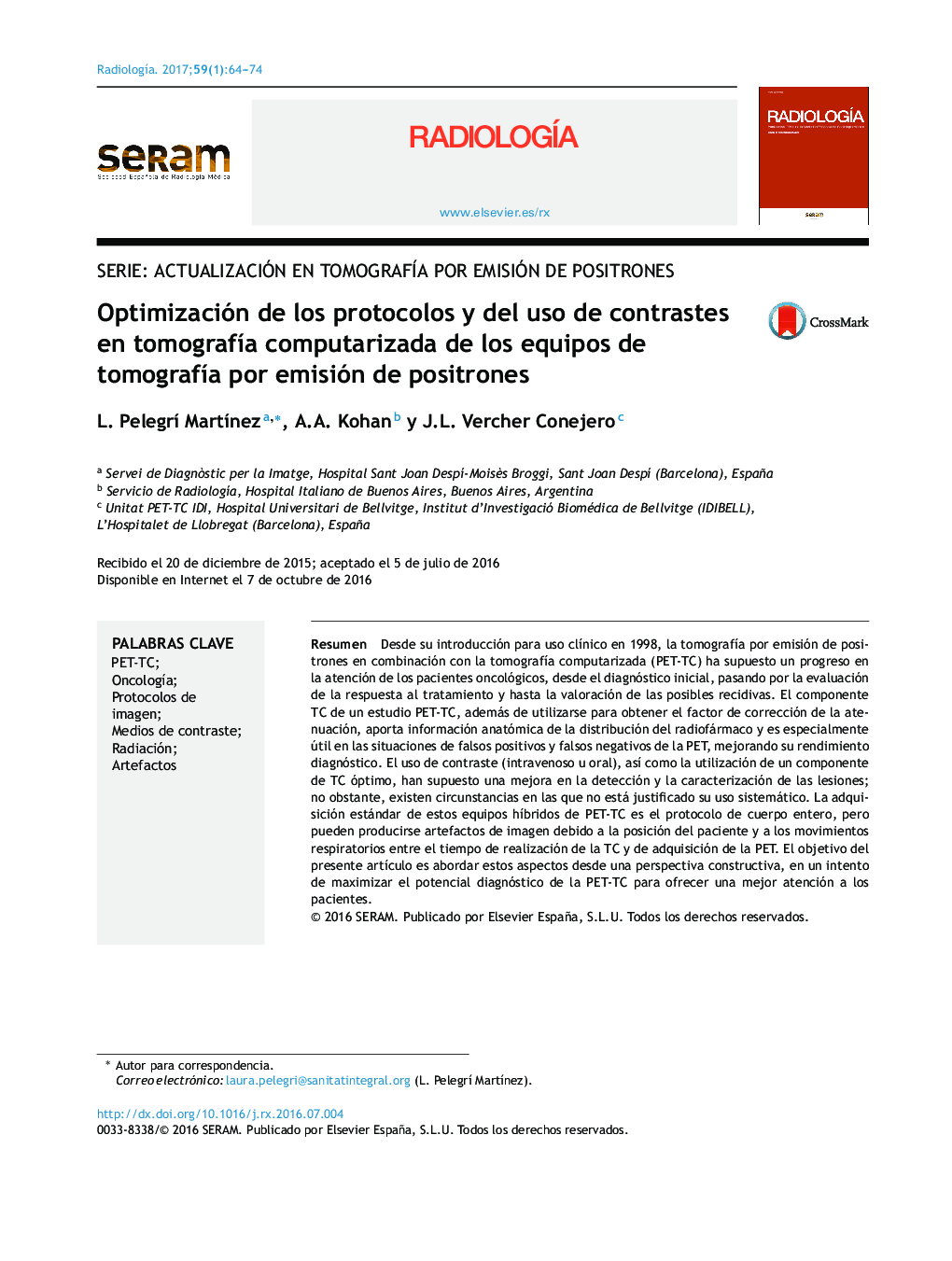| Article ID | Journal | Published Year | Pages | File Type |
|---|---|---|---|---|
| 5728062 | Radiología | 2017 | 11 Pages |
Abstract
The introduction of PET/CT scanners in clinical practice in 1998 has improved care for oncologic patients throughout the clinical pathway, from the initial diagnosis of disease through the evaluation of the response to treatment to screening for possible recurrence. The CT component of a PET/CT study is used to correct the attenuation of PET studies; CT also provides anatomic information about the distribution of the radiotracer. CT is especially useful in situations where PET alone can lead to false positives and false negatives, and CT thereby improves the diagnostic performance of PET. The use of intravenous or oral contrast agents and optimal CT protocols have improved the detection and characterization of lesions. However, there are circumstances in which the systematic use of contrast agents is not justified. The standard acquisition in PET/CT scanners is the whole body protocol, but this can lead to artifacts due to the position of patients and respiratory movements between the CT and PET acquisitions. This article discusses these aspects from a constructive perspective with the aim of maximizing the diagnostic potential of PET/CT and providing better care for patients.
Keywords
Related Topics
Health Sciences
Medicine and Dentistry
Radiology and Imaging
Authors
L. Pelegrà MartÃnez, A.A. Kohan, J.L. Vercher Conejero,
